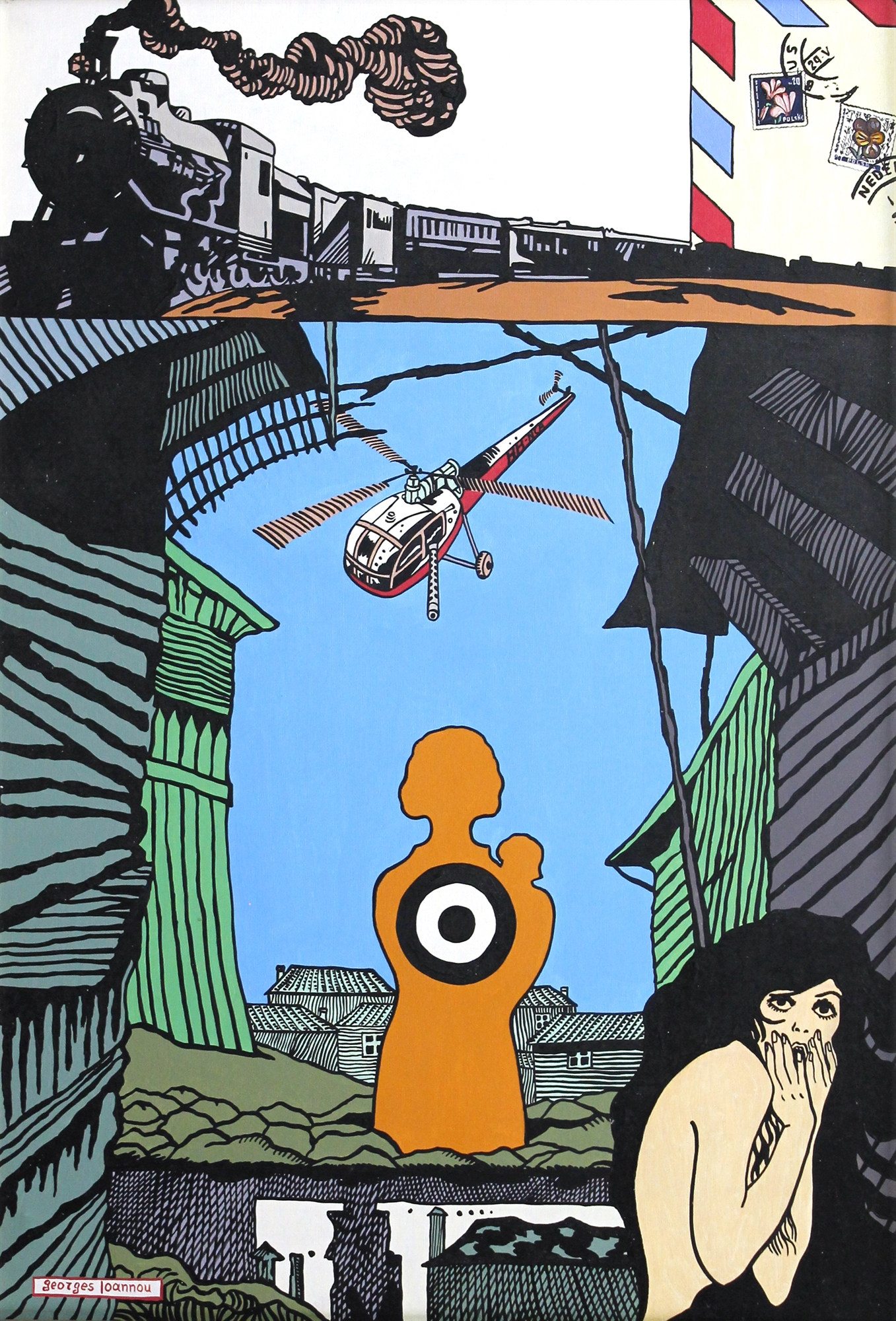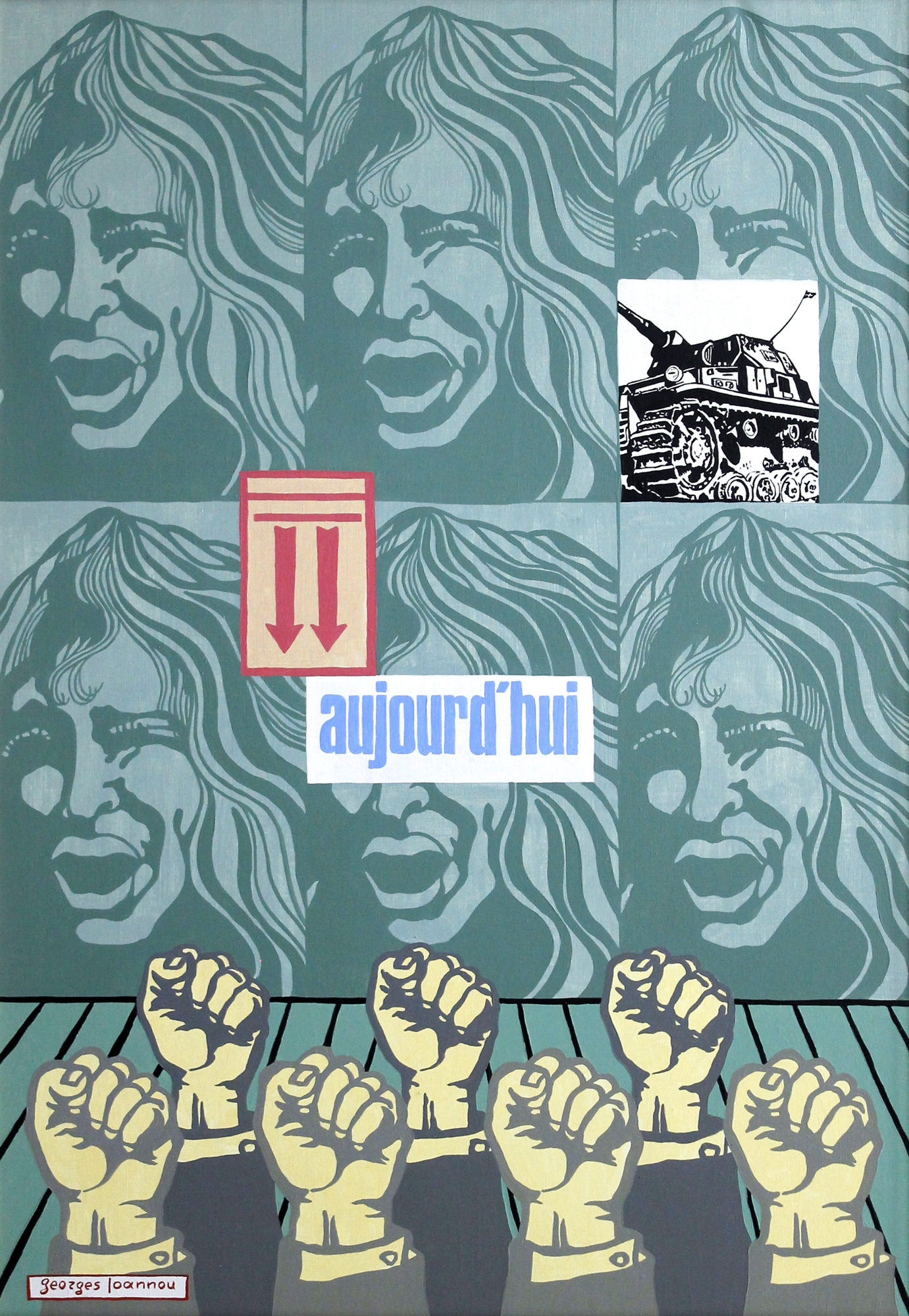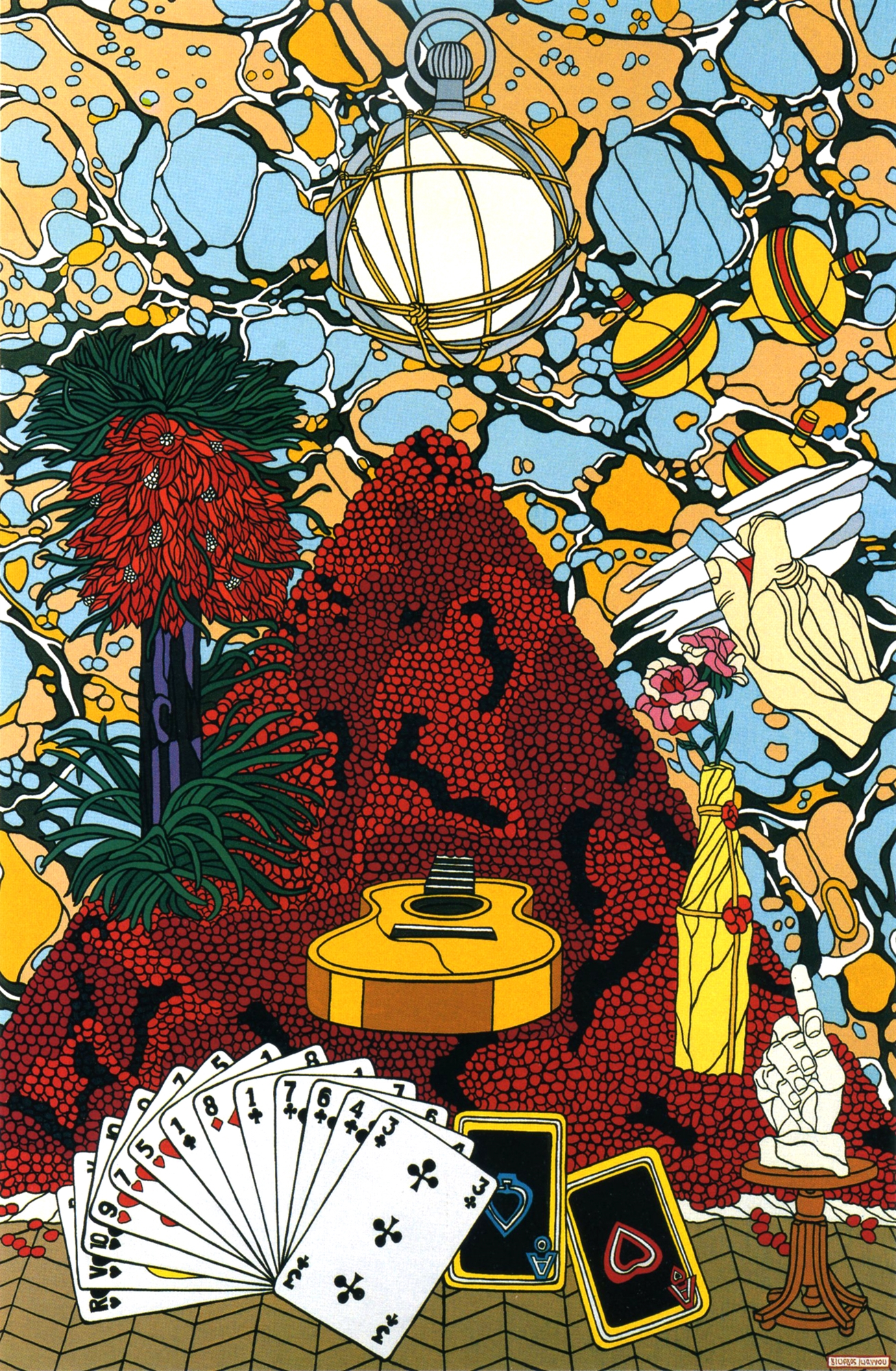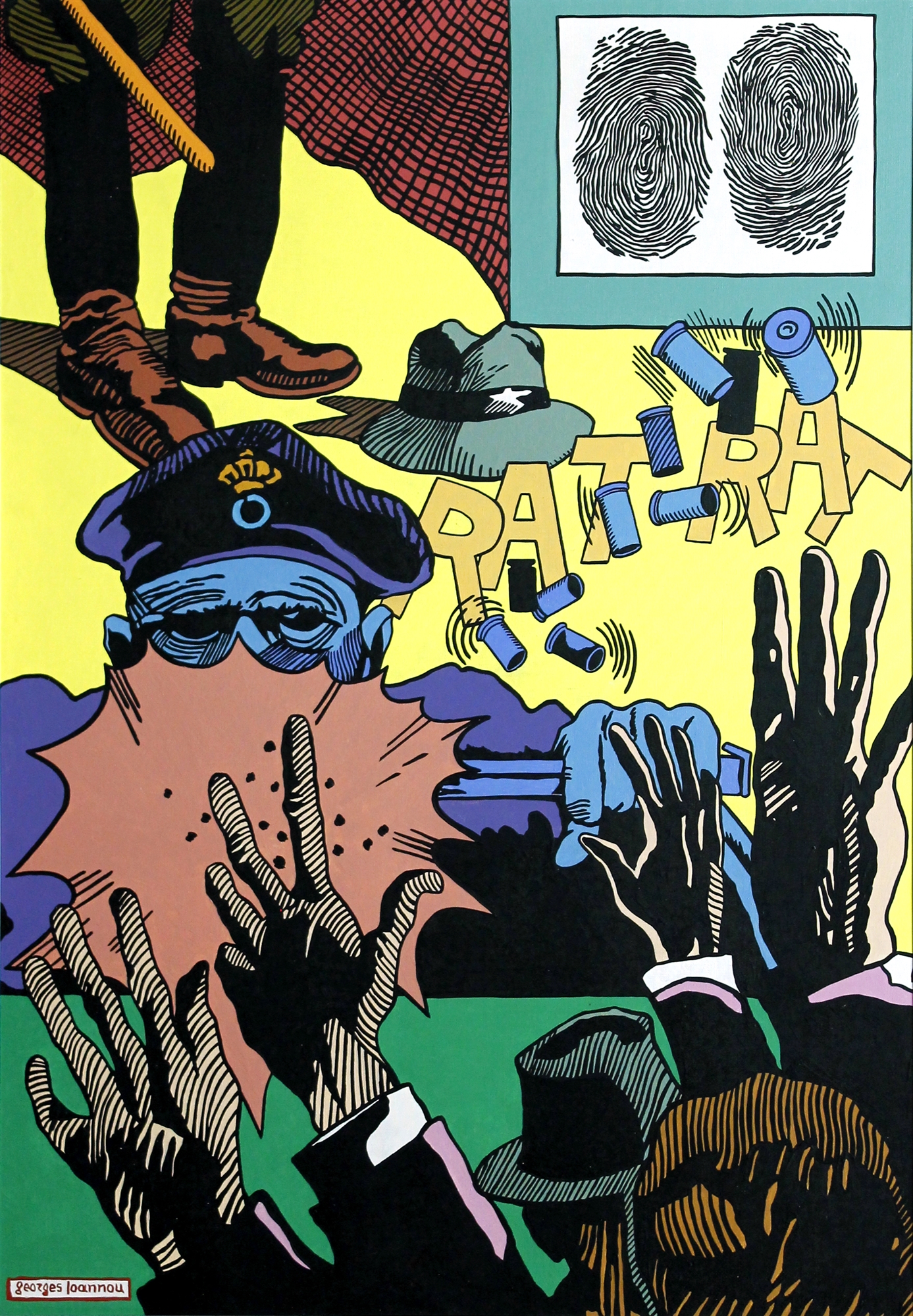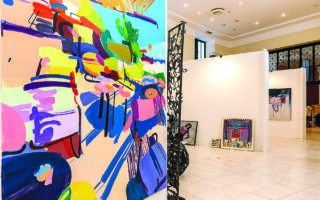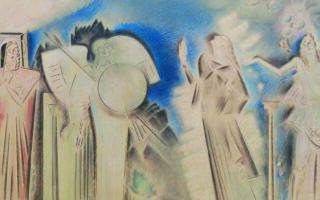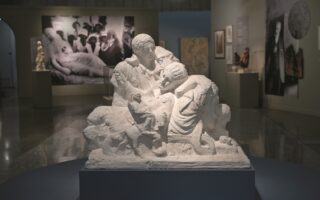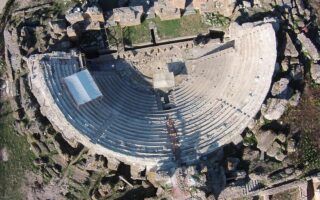The darkness lurking behind vivid color
Highlighting the deceptive innocence of his imagery, Athens Municipal Gallery hosts retrospective on pioneering artist Giorgos Ioannou
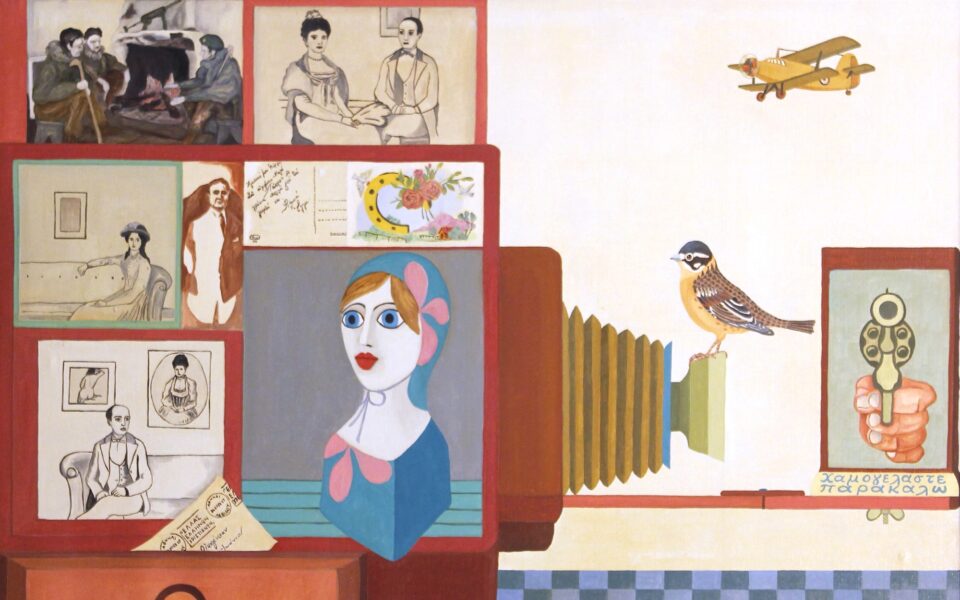
Back in 1973, the influential Greek writer Antonis Samarakis had proposed a different title for Giorgos (Georges) Ioannou’s solo show: “Panic in the Streets and Hearts.” The painter was 47 years old at the time and had just entered the most mature, creative and productive period of his career.
Samarakis’ tacitly political comment was intended to point to the intensely anti-military spirit of the artist’s work (Greece was still under the colonels’ junta at the time) and sought to make a connection between the narrative of his canvases and the anxieties, social isolation, chaos and barbarity of the modern, mechanical world. Was such darkness, though, possible from an artist whose work was bathed in color, who loved comic books and whose vernacular was so profoundly influenced by pop art?
“Ioannou’s work appears humorous on the surface but has a nightmarish quality deep down. Children love his paintings but they also hold the gaze of the adult viewer, who looks for the motifs that hold the key to his world,” explains Christoforos Marinos, an art historian and curator for the City of Athens’ cultural organization, OPANDA, who put together the exhibition “Giorgos Ioannou: Inner Journey.”
“His images may cause spontaneous laughter, though they are entertaining in the same way that you are entertained or relaxed by solving a crossword, finishing a difficult puzzle or reading a long novel. Really understanding his work and connecting with it is something of an intellectual exercise,” adds Marinos.
The exhibition comprises 170 pieces spanning almost the entire length and breadth of Ioannou’s career and is arranged across both of the Athens Municipal Gallery’s buildings in the downtown Metaxourgeio district. It is also being held 20 years after the last retrospective on Ioannou, who died in 2017 at the age of 90. Marinos has approached it in chronological order, starting in the 1960s and ending in 2008, even though the artist continued working despite his failing health almost until the end of his life.
‘Ioannou was a painter-writer. Each of his paintings is like a densely written page, or at least that’s how it ought to be treated’
“Ioannou was a painter-writer. Each of his paintings is like a densely written page, or at least that’s how it ought to be treated. Like illustrated comics, his work is completely narrative and focuses on man and current events,” comments Marinos. “At the same time, he was a painter-collector, in the sense that his canvases are an imaginary museum of oddities, a collection of bizarre images and objects. There are also cities, real and imaginary; or, to be more precise, memories of cities where he lived, held exhibitions and traveled. Apart from his beloved Athens, there’s also Paris, Milan, Venice, Ostend, London, Salzburg and Vienna.”
The challenge Ioannou set himself was to paint like a child while telling a story for adults and expressing his feelings in a manner that was unforced and unfiltered.
This does not mean that his work is fancy-free and lacking in social commentary. In fact, the pieces from the 1970-1975 period are steeped in violence, both blatant or subtle, masked by the comic-book technique that endows the images with a sense of playful innocence.
Nevertheless, the symbols and motifs speak of a controlling and oppressive society: helicopters, machine guns and pistols, knives, matches, masked figures, human targets, prison inmates, soldiers and tanks, warships and fighter jets, protesters and street battles.
These motifs give way in the early 1980s to the theme of the destruction of the natural environment. Indeed, a large part of his opus is a protest against the “erosion of things,” while there is also a sense of nostalgia for things that have gone, never to return, like the old-fashioned wrought-iron lights taken down from the streets of Athens.
The result of careful study, all of Ioannou’s symbolism stems from memories and experiences, often traumatic, starting with the Nazi occupation of Greece and the civil war.
“Giorgos (Georges) Ioannou: Inner Journey” is on display through January 29, at the Athens Municipal Gallery (Germanikou & Myllerou and Leonidou & Myllerou, Avdi Square, Metaxourgeio, tel 210.520.2420). Admission is free of charge and opening hours are Tuesday-Saturday 11 a.m. to 7 p.m. and Sunday 10 a.m. to 4 p.m.
